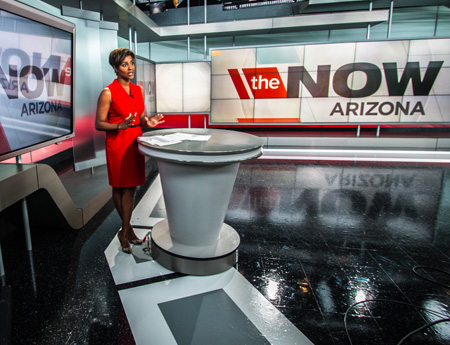Net Gains Are Station Losses

The local broadcast drama began anew Jan. 1, and with any luck could go wire-to-wire in 2015. Yes, as the rest of the nation awakened with a New Year’s Day hangover, the folks at WISH Indianapolis rose ready to face the world as an independent-minded CW station, with CBS slapping its affiliation on WTTV. WISH’s plight epitomizes 2015’s central issue—networks and TV stations, while partners, are increasingly adversaries, aiming to impress upon each other that they’re the main reason why viewers watch the station and are entitled to the biggest bite of the multichannel video programming distribution retrans apple.
Station groups spent 2013 and ’14 bulking up through acquisitions, and plan to flex those muscles in 2015. E.W. Scripps and Journal Communications aim to sew up their merger, with the stations under the Scripps banner, and newspapers on the Journal side. Media General and LIN Media recently made their marriage official, with LIN CEO Vincent Sa-dusky taking over the new Media General.
While Fox Television Stations remains intent on picking up stations in NFC markets where it currently does not own—St. Louis and Milwaukee look attractive—and Nexstar has considerable headroom under the ownership cap, the acquisitions will be smaller and more strategic in 2015. “I don’t know what’s left,” says one broadcast vet. “It seems everybody has already paired off.”
Facing 2015 without serious scale will make an already cutthroat business even more challenging. “Those ‘professional’ broadcasters who’ve been in the acquisitions game will turn loose their sales forces and drive the dollars in the market,” says Edward Atorino, analyst at Benchmark Company.
No Biz Like Show Biz
One aspect of a bigger group is more TV homes to help amortize a homegrown program or two. Increasingly frustrated by the big promises and typically modest returns of syndicated shows, groups are sinking serious cash into research and development in an effort to produce the next big hit show—or, much more likely, a modest performer that nonetheless gives the group ad inventory and control over its own destiny. Scripps debuted the afternoon newscast The Now in the latter half of 2014 and remains committed to its plans. Gannett and Debmar-Mercury formed a partnership to develop, produce, test and distribute first-run series, with the fruits of their venture expected to hit the air this year. Raycom, on the heels of Fix It and Finish It and Flip My Food, is committed to DIY shows, too.
Broadcasting & Cable Newsletter
The smarter way to stay on top of broadcasting and cable industry. Sign up below
While convergence was the buzzword of a previous era in media—the mega-might of co-located TV, radio and newspaper never quite materialized—divergence is the theme for 2015. After Tribune completed a spinoff of its newspaper business last year, freeing up the TV side for growth, Gannett too plans to be a pure-play broadcaster in 2015. Gracia Martore, president and CEO, spoke of the split “building scale, increasing cash flow, sharpening management focus and strengthening all of our businesses to compete effectively in today’s increasingly digital landscape.”
No Static at All
Yet radio remains part of the convergence equation, with Univision and CBS among the broadcasters touting the virtues of local television and radio working side by side. After the merger closes, Scripps will have radio stations that it says will help it go deeper in its markets, from both a content and an ad sales perspective.
Ah, ad sales. National revenue remains a “problem child,” according to Steve Lanzano, TVB president and CEO. But local revenue is a fortunate son. “It’s on fire,” says one consultant. “Stations have a unique relationship with those folks.”
Automotive, typically representing 25% of a station’s take, looks good, but not great, for 2015. It’s been banner year after banner year since those dark days of the recession, and 2014 saw auto sales up around 5%. The year 2015, however, looks to be around 16.5 million cars sold—and every unit means $250-$300 in broadcast TV advertising, according to Lanzano.
The forecasted total is a 2% increase over 2014. “You’re starting to see the curve flatten a bit,” Lanzano adds.
The robust political spend in 2014 surprised even the optimists, which will make for some unfavorable comps in the second half of 2015. But it’s really about core, and Lanzano sees that up a modest 2%. Atorino is more bullish—calling for a 4%-5% improvement in core business this year. “[2015] could be good if the economy doesn’t roll over and automotive doesn’t dry up,” he says.
There are plenty of other wild cards. The networks and affiliates need to iron out their TV Everywhere plans. Nielsen needs to do a better job of measuring on-air and on-the-go television, or step aside and let Rentrak be the coin of the realm. The general ratings slide is troubling, and over-the-top offerings continue to pull viewers away from the late local news.
But for an off year in terms of elections and Olympics, 2015 does not look all that, well, off. And keep in mind—the Iowa caucuses are just over a year away. “If we can just get through 2015,” says one group chief, “2016 will be good.”
Michael Malone is content director at B+C and Multichannel News. He joined B+C in 2005 and has covered network programming, including entertainment, news and sports on broadcast, cable and streaming; and local broadcast television, including writing the "Local News Close-Up" market profiles. He also hosted the podcasts "Busted Pilot" and "Series Business." His journalism has also appeared in The New York Times, The L.A. Times, The Boston Globe and New York magazine.

